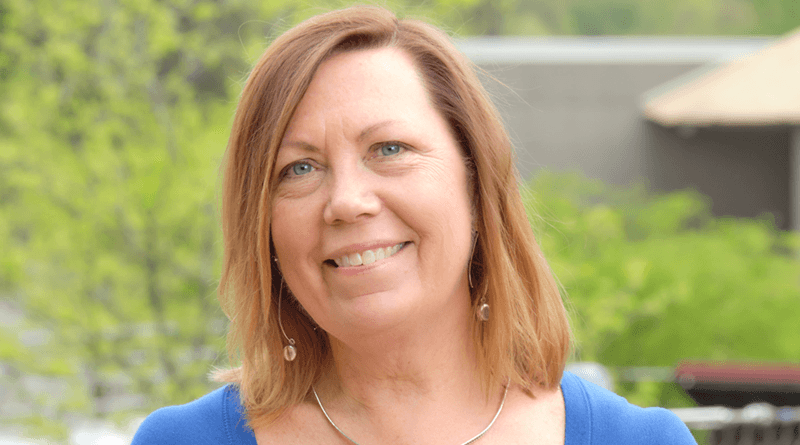Pamela Sanchez Wants You to Have Fun
CEO and president of Seneca Park Zoo Society says a visit to the zoo should be fun, transformational and leave visitors ‘changed’
By John Addyman
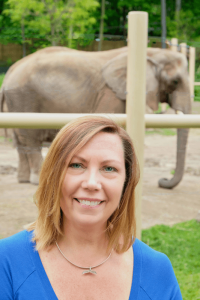
Pamela Reed Sanchez wants you to have a good time.
And she wants more.
Here’s an example:
“I had a win today,” she explained. “A 10-year-old girl came out of the gift shop with her friend, just the two of them, and she’s putting something in her little purse. And she said, ‘I bought a straw. I went to the zoo and I bought a straw for $7.’
“She bought one of our reusable metal straws. She didn’t buy a plush animal. She bought something that she could use every day and stop using plastic straws. That’s a win,” Sanchez said.
The girl was smiling, self-satisfied, and leaving the zoo in just the way Sanchez wanted her to — changed.
“We want people to feel that they’ve had a personalized experience, that they learned something, and they are moved to do something differently because of what they learned here,” she said.
Sanchez, 55, is the president and CEO of the Seneca Park Zoo Society. She is responsible for people who interact with guests — taking admission, serving meals, providing classes, designing experiences, working the gift shop, and taking the zoo’s message out to a much wider community.
Monroe County owns the zoo, manages the care and feeding of the animals and collects 60 percent of the general admission and membership fees. The rest goes to the Zoo Society.
So much of the experiences people have in interacting with the animals belong to Sanchez, who believes the varied elements of her career led her to this spot and this job five years ago.
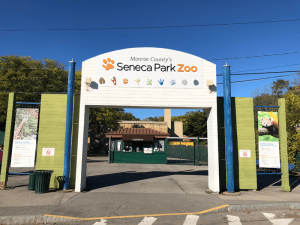 At Seneca Park Zoo, she has about 30 full-time employees and approximately 100 seasonal and part-time workers under her wing who come to work with a unique single-mindedness in their approach to the zoo’s mission and one another.
At Seneca Park Zoo, she has about 30 full-time employees and approximately 100 seasonal and part-time workers under her wing who come to work with a unique single-mindedness in their approach to the zoo’s mission and one another.
For two years running, the zoo was named one of Rochester’s top places to work by the Democrat & Chronicle and recently won a special “Mindfulness” award, also from the D&C.
She believes in “transformational moments,” something she learned about when she led the Actors Theatre in Phoenix. Part of that transformational philosophy is teaching people just how much zoos are different and important today. That is an all-day, everyday task, she said.
To make her point, she highlights a study done by the Association of Zoos and Aquariums, which asked millennials, “Do you support the mission of zoos and aquariums?”
Seventy-five percent of millennials said, “No.”
The association asked the question a different way: “The mission of zoos and aquariums is to save animals from extinction; do you support the mission of zoos and aquariums?”
Seventy-five percent of millennials said, ‘Yes.”
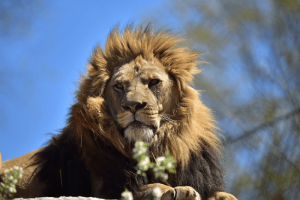
And there’s the goal of the Seneca Park Zoo: “We’re a conservation organization and we’re doing meaningful work,” she said. “We’re doing it here. We’re doing it in concert with 240 other accredited zoos and we’re doing it internationally.
“We want to tell the story of what a zoo means and take away the stigma of the word ‘zoo.’ Our mission is to care for and conserve wildlife and wild places.”
More than a destination
Her vision, the Zoo Society’s vision, is to be a leader in education and conservation action for species survival. “It doesn’t matter how big your campus is or how big your budget is to be a national leader. It’s about doing innovative work and work that’s scalable to other places, and that’s what we’re doing here.”
Look around at the signs throughout the zoo that tell about a particular animal species that resides there. Those signs tell about the animal, tell why its existence is important, and what you can do to keep that animal thriving.
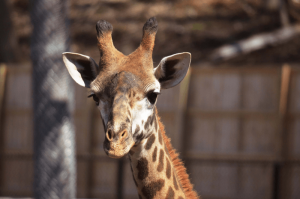 It’s a message that Sanchez can’t stress enough.
It’s a message that Sanchez can’t stress enough.
There are 35,000 African elephants walking the earth today. Without major intervention, they’ll be gone in 10-15 years. Elephants!
Seneca Park has two red pandas. There are only 4,000 left in the world. And the park’s duo is not a breeding pair.
Approach the Seneca Zoo, and you are very much on the mind of Sanchez and everyone who works inside. To become transformed, you have to be engaged.
“We want people to feel that they’ve had a personalized experience,” she said, “from the moment they get here, that they’ve learned something, that they are moved to do something differently because of what they learned.”
Like buying a metal straw.
If you’re a “Game of Thrones” fan, you’ll recall in the last episode that Bran the Broken became king because he, like no other person, knew all the stories of the Seven Kingdoms.
Stories are powerful, thought provoking, memorable and conjure up images.
Everyone you meet at Seneca Zoo has been trained to speak clearly and make eye contact — you’re the most important person to them at the moment — and each employee has a story to tell about the animals and what the zoo is doing to help them survive.
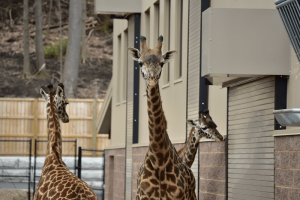 Sanchez has advanced degrees in public administration and nonprofit management. She taught those subjects as a professor at Arizona State. She also taught managing diversity and environmental energy policy, and organizational change and development.
Sanchez has advanced degrees in public administration and nonprofit management. She taught those subjects as a professor at Arizona State. She also taught managing diversity and environmental energy policy, and organizational change and development.
Educated in Irondequoit and Russell Sage College in Albany, she started her career in hospital administration in London, finished her advanced studies at Syracuse, then ended up at Arizona State.
From academia, she took a job as director of development at the Heard Museum in Phoenix. “That’s where my work in cultural organizations began,” she said.
Transformative episodes
Then that transformation experience thing bit her.
“I left the Heard Museum to start my own company and my phone started ringing.
“The Actors Theatre of Phoenix called. It was too exciting an opportunity to turn down. The work they were doing, what they were putting on stage, the truly transformational moments they were giving audiences. To me, that’s what great professional organizations do — they give people those transformational moments.
“Once you have one of those moments, you don’t look at the world the same way. It doesn’t matter whether it’s a dance performance in a theater or you’re coming here to learn about the plight of elephants.”
Sanchez came back east to take a job as the director of development at the George Eastman House. “This is where I wanted to be, where I wanted to raise my daughter, Reed Sanchez.
“She’s getting her master’s degree in literacy at Brockport so she can teach second grade in a city school. We had a very happy, full life in Phoenix, so moving back here was a big deal.”
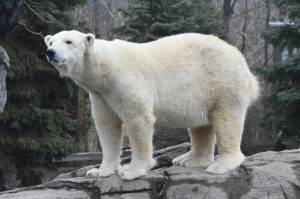 Sanchez job at Eastman House eventually included resource development, but she wanted a little more.
Sanchez job at Eastman House eventually included resource development, but she wanted a little more.
“I wanted a leadership role,” she said. “The leader.” Another headhunter’s call came, and this time the Seneca Park Zoo Society was beckoning.
“I was turning 50, my daughter was leaving for college. It was a transitional point in my life,” Sanchez said. “I asked myself, ‘What’s next for me? Is there something different I should be considering?’ I had had a taste of a leadership role when the museum was going through its search for new director, and I had practice as director. I was asking myself, ‘Do I want to be a community leader or do I want to continue to be a No. 2?’ I decided I wanted to be a community leader.“
She took the job at the Zoo Society as the executive director in 2014. Last year, she asked her board to be named the CEO and president.
“It was a title change only,” she explained. “In my annual review, I told the board that change mattered to me because when you meet people in the corporate world, it levels the playing field. It matters. It does feel different, having people in the corporate world understand that my role is not less than theirs. We’re not losing money here — we’re a $6.5 million organization and have had clean audits and balanced budgets for 22 straight years.”
The zoo is about to rebuild the entrance building to accommodate tropical species like gorillas. That and a new restaurant are the big projects.
Sanchez also has plans for her office: a new desk will go along one wall, so she can look directly out her window and check on the river otters below.
Out that same window, she can see the wonderment of kids coming to the zoo and the adults who use those kids as an excuse to visit and revisit. She can see people reading the informative signs about the zoo’s animals. She can see people enjoying snacks held in biodegradable containers. She can see people engaging with the animals, appreciating them, loving them.
And she can see the little girl with the metal straw, on her way home to teach her family and friends about saving the animals.
What Makes Pamela Reed Sanchez Tick?
‘This zoo is a happy place’
 Look at what Pamela Reed Sanchez has accomplished, and what’s on her plate — an expansion of the zoo, new services, and urgent efforts to save animal species — and you have to wonder, where does she get the energy?
Look at what Pamela Reed Sanchez has accomplished, and what’s on her plate — an expansion of the zoo, new services, and urgent efforts to save animal species — and you have to wonder, where does she get the energy?
“I get up every morning and work out,” Sanchez, 55, says.
She also runs, although a stress fracture has slowed her down this year. She has completed 11 half-marathons and two full marathons.
With the recent injury, her routine has tempered some.
“I hike and I bird. Everywhere. When the weather is decent, meaning not raining, I try a different trail every weekend. I go all over the place. High Acres. Keuka. Montezuma. I stay close. I love to be near the water. I like Huckleberry Swamp. The cacophony of frog and bird sounds there is wonderful.
“Also, I shut down once a year for 10 days. I go to a beach in a warm climate in March. I let my shoulders drop. I breathe. I only started that a few years ago. I read, I snorkel, I hike, I explore. I tune out of work and I come back much better.”
 She also writes, and is preparing a book on diversity and inclusion in nature-based organizations. “I’m learning to carve out time to focus on that,” she said.
She also writes, and is preparing a book on diversity and inclusion in nature-based organizations. “I’m learning to carve out time to focus on that,” she said.
In meaningful ways, Sanchez also draws positive vibes from the animals that surround her every day at the Seneca Park Zoo.
“Our animals are not behind bars. They’re not really enclosed. If they’re happy, your perception of them is positive. Before, in the old zoos, the animals felt stressed, felt lonely and we in the zoo couldn’t talk to you about species survival. Here, you’re so close to the animals. Since 2012, we’ve provided a more natural habitat for the animals, a better experience for the animals. This zoo is a happy place. When the animals aren’t stressed, and you’re not stressed.”
Pamela Sanchez: The Transformer
Zoo Society leader restructures Seneca Park treasure
Pamela Reed Sanchez learned it, taught it, and practices it: organizational transformation.
How did she do that at the Seneca Park Zoo?
“First, I observed quite a lot,” she said, explaining how she spent her first months as the Seneca Park Zoo Society executive director. “After three or four months, I started asking questions. I did a gap analysis: What audiences aren’t we serving and why aren’t we? Why do people feel their children ‘age out’ of zoos at age 6? You should never age out at the zoo.
“I didn’t read anyone’s personal files. I gave everybody a fresh start. Everyone had an equal opportunity to impress or not impress, to show up or not show up.”
After a year at the helm, she restructured the entire organization the Zoo Society manages — food, gifts, admissions, educational and outreach programs, marketing, communications, social media, along with Monroe County), information technology, and all the business structures.
To get everyone on the team headed in the right direction, “we developed a statement of workplace values and ethics, and that’s something we revisit every year,” she said. “It’s a statement of how we work together, and that we’re all here for our mission and vision. I believe when you come to work knowing what your vision is and wanting to achieve it, and we have rules for how we behave with one another based on ethics, you can create a pretty outstanding work culture, and we have.”
Employee values include honesty and transparency (“We don’t lie; we tell the truth and we share,” Sanchez said), accountability, willingness to change, team above self, partnership and collaboration, diversity and inclusion.
“Diversity is who we are and inclusion is how we behave,” Sanchez explained. “We have a diverse group of people, we are a diverse community, we have different beliefs, different skin tones, different gender identities, all kinds of things. That’s who we are. That’s what this world is made up of. Inclusion is making sure everyone who comes here feels welcomed and they belong, whether they’re on my staff or come through the front gate as a visitor or a volunteer.”
“The biggest sense of diversity for me comes when I see the applicant pool for hiring,” she said. “I don’t see diversity, particularly in terms of people of color. Interestingly, I also don’t see it in terms of sexual orientation.
“Ten years from now, the seats of power are going to be occupied by people who are millennials today, who live in an urban core, and are people of color. One thing that all three of those groups have in common, and this is an over-generalization, is that they’re disconnected from nature.
“If you are disconnected from nature and sitting on city council or making a business decision on where you’re locating a company or some source you’re going to get your toilet paper from, are you thinking about the environment? Are you thinking about clean water? Clean air? Do we all deserve to have those things? Why aren’t people of color interested in working for the zoo society?
“We’re changing. I have our urban ecologist workforce development program (a zoo society outreach to schools). We’re getting kids interested at an early age in what a nature-based career can be. Those kids are going to be working with middle school kids at city of Rochester recreation centers, so they become role models for the even younger kids.”

